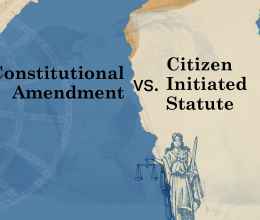Juvenile justice systems were created to protect young people’s rights and focus on education and rehabilitation rather than punishment. Sadly, in recent years, Ohio institutions have drifted away from that original purpose. Many of our youth also fall victim to the school-to-prison pipeline, the policies and practices that funnel children out of schools and into the juvenile and criminal legal systems.
As of September 2024, there are 549 youth being held in community correctional facilities and Department of Youth Services (DYS) youth prisons in Ohio. Youth who are committed to DYS can be anywhere from 10-21 years old. Black youth currently represent 72% of youth who are incarcerated by DYS, while white youth only represent 21% of that population. This highlights the gross disparity in our criminal legal system as Black Ohioans only make up 17% of the general population. Additionally, 76% of youth committed to DYS are on the behavioral health caseload and in need of services to address non-criminal challenges.
Unfortunately, the reality of incarceration is often bleak and plagued by violence, use of force, solitary confinement, and poor healthcare services. The population of incarcerated youth in Ohio disproportionately overrepresents children of color and greatly impacts communities of color. According to DYS’s Recidivism Report, approximately 40% of incarcerated youth will return to DYS custody or be introduced to the adult criminal system after release. This recent discovery points to the need for a systemic evaluation of Ohio’s youth justice system.
Depending on the alleged offense of the youth, they may end up with a variety of alternative placement or diversion avenues, most likely interacting with DYS at some point. While youth are occasionally placed elsewhere, the majority of justice-involved youth will be placed in one of the three following settings.
Local Facilities:
Youth held while waiting for their court date typically find themselves in local county court run facilities. Ohio has 33 county-run juvenile detention centers that are responsible for housing a significant portion of Ohio’s incarcerated youth population as they wait for the outcome of their case. Local detention facilities give youth a greater chance of staying connected with their families and communities in preparation for their release.
Most of the youth adjudicated for a delinquent or unruly offense may serve in these local facilities, but youth with more serious offenses may be committed to a higher security center. Many of these local detention alternative placements have a higher number of available services and community partnerships and allow youth to stay as connected to their community as possible throughout their legal system involvement.
Community Corrections Facilities (CCF’s):
Youth who have been adjudicated with a felony can be committed to one of 11 community corrections facilities in Ohio. These facilities act as a local detention alternative to larger facilities that may be far away from the youth's hometown or community. Community corrections facilities have fewer beds and more services than traditional detention facilities, and they attempt to focus on rehabilitation of youth in preparation for their release, rather than punishment for their offenses. These facilities were introduced as a part of the RECLAIM (Reasoned and Equitable Community and Local Alternatives to the Incarceration of Minors) initiative in Ohio, which incentivized a system-wide shift towards smaller, more rehabilitative detention resources for delinquent youth.
Department of Youth Services (DYS) Youth Prisons:
Youth who are found to have committed a serious felony or misdemeanor crime can be committed to one of three DYS youth prisons: Circleville, Cuyahoga Hills, or Indian River. These facilities are the largest, and highest security settings for youth in Ohio, and unfortunately report some of the most dismal outcomes for the youth they serve. Challenges in hiring and retaining qualified corrections staff have led to unsafe situations for both youth and staff, serious injuries, and long periods of solitary confinement.
Last year, Governer DeWine put together a working group primarily comprised of police officers, prosecutors, and judges to evaluate Ohio’s youth justice system. The working group reported that youth in state-run DYS youth prisons had poor outcomes after release and the facilities themselves experienced difficulties retaining qualified staff members and meeting the needs of the youth they serve. By shifting the system towards smaller, local community-based facilities, youth have more opportunities to stay connected to their families and communities and receive the rehabilitative services they are entitled to, which increases their likelihood for positive reintegration following their release. Currently, each DYS prison houses approximately 140-160 youths, while many of the CCF’s focus their staff and resources on no more than 30-40 children at a time.
Rather than responding to youth crime with outdated and ineffective “tough-on-crime” approaches that criminalize adolescence, our public leaders -- city, county and court -- must work in partnership to ensure our youth are given ample opportunities to heal from their own trauma and be a positive part of our community through meaningful connections. At the ACLU, we promote Smart Justice as a way to encourage decarceration of overpopulated prisons and detention centers and to fight racism within the criminal legal system that starts with over policing in marginalized communities.
We believe all young people have the capacity to change and realize their fullest potential. Children and youth who are at risk of becoming involved in the juvenile court system should be provided with effective prevention, treatment and care that is provided through authentic relational supports.








